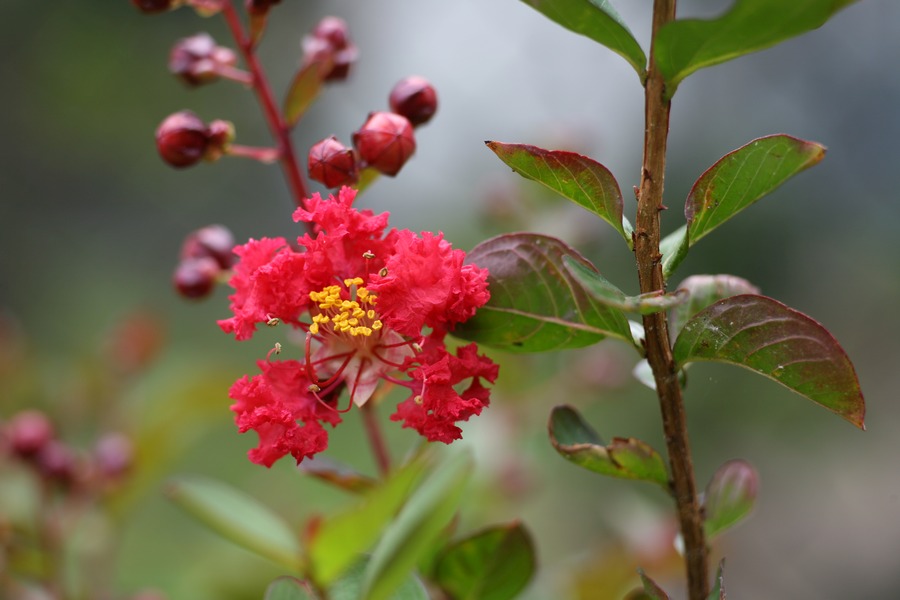



Source: Wilson Bros. Gardens (GA)
Size shipped: #1 pots (measured 2-3'?)
Planted:
First flowering: July 2020
Buy one at PlantingTree.com (affiliate link; supports this website)
(These plants stayed behind when I moved in 2021; therefore, the following text will receive no further updates.)
I got three of these to go in front of a short section of fence stretching from the corner of the house to the neighbours' driveway (I have a VERY SHALLOW back yard). Taking the advice of Dr. Carl Whitcomb (breeder of the 'Whit' series of crapemyrtle cultivars, including this one), I decided to wait until summer to plant in ground, as apparently root growth and establishment is actually faster in the summer when the soil is warmer than in the spring, at least for crapemyrtles; this also gave me the opportunity to try to kill the grass first (by smothering it with cardboard and mulch) so that I wouldn't have to worry about separating it from the good soil when planting time comes.
So their first planting was a repotting, into some Air-Pots; due to the short-term nature, I decided to use up the rest of the Scott's Premium Potting Mix that the previous owners of the house had left behind in the shed, but with Repti-Bark and perlite mixed in as well. At least for the first two, that is; I somehow underestimated how much mix I would need and ran out before the third one, so the third one got almost all Scott's Premium with just a bit of Repti-Bark on top. The roots looked perfectly fine on the sides of each root ball... but not at the bottom, which in each case was a packed mess that needed significant loosening.
Thankfully, when the time came to plant them out, the root systems looked much better (at least from the outside of the root balls; I didn't remove the substrate on planting due to the compacted soil in the planting zone and the requirement that crapemyrtles have fast drainage), with many root ends poking out of the sides, no problems on the bottoms, and nothing circling or growing vertically. Taking into account Dr. Whitcomb's aforementioned advice, for planting I picked a day when six out of the next seven days had forecast highs of 90+°F, but also a day when heavy rain was expected that night (and by golly, did that rain come to pass), since June 2020 didn't give us nearly the consistency of rainfall that we expect in summertime in New Jersey, and July wasn't looking too good in that regard either. Happily, it all appeared to have worked: the crapemyrtles kept on growing with no discernible interruption, then flowering beautifully as well (even the smallest of the three).
Throughout October the crapemyrtles started putting on some flaming orange fall colors, on their inner and lower leaves; this struck me as odd, as I'm used to seeing trees color up and drop leaves from the top down instead. Then the first frost at the end of October very suddenly killed all the leaves, leaving them dry and shriveled and putting an abrupt end to the show ('Pocomoke' was similarly affected).
The winter of 2021 gave us some of the largest snow loads we've seen in a while, and two of the crapemyrtles had some noticeable branch damage as a result. I'm wondering if it's worth it to pre-emptively shorten some of the lower branches before the dormant season to prevent this?